




过几天…… and a few days later…
失物 019:超级厉害的灰白色公猫(差不多一个月大)
发现时间:2012年4月20日晚上11点左右
地点:上海市徐汇区襄阳公园西侧(襄阳北路靠近淮海中路)
Lost & Found Object No. 019: extremely loveable slate-grey and white male kitten, approximately one month old
Discovered: 20 April 2012, approximately 11 p.m.
Location: west side of Xiangyang Park on Xiangyang North Road near Huaihai Middle Road, Xuhui District, Shanghai
—–
“小公园”已经被爱他的人取走了,但是如果您有关于失物招领处其它物品的信息,请跟我们联系。“Little Park” is no longer available for claiming, but if you have any information regarding claims for previous lost & found items please contact HomeShop.
 时间 posted on: 22 May 2012 |
时间 posted on: 22 May 2012 |  发布者 author: e |
发布者 author: e |  评论 comment (0) |
评论 comment (0) |
The following is cross-posted from Petra JOHNSON’s original notes at 小卖部 Kiosk, first published on 9 April 2012. It is the beginning of a choreographic dialogue involving walking, gardening and “getting to know” along two parallel routes in Cologne and Beijing. You can view her route in Beijing here.
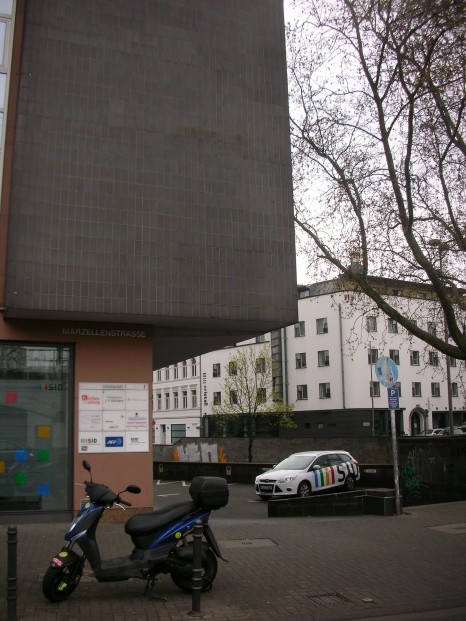
When you walk 600 strides from the North Exit of the central World Heritage Centre in both Cologne and Beijing you will find yourself at the locations shown below: The Cologne route leads diagonally over the forecourt of the main train station to the taxi rank, then it heads toward a ring road and there turns right into Marzellenstrasse. After 600 strides, you are just before a small enclave called Ursulaplatz on the opposite side of the road.
Ursulaplatz shelters one tree that hovers over a fast road and is hovered over by a railway line. The predominant sound is the droning of cars passing out of sight below, occasionally relieved by a passing train passing above.
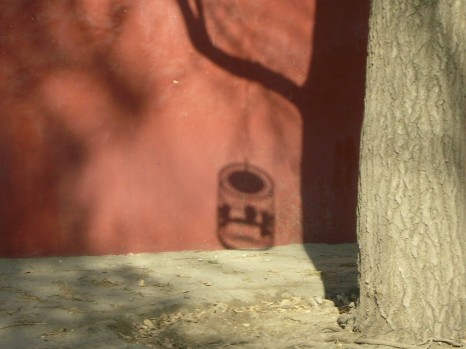
In Beijing the route proceeds from the exit at the Northern End of the Imperial Palace just opposite Jinshang Park and turns right into the pathway along the moat. At the first junction it turns left into Jingshan West Street and runs through the small stretch of park outside the wall of Jingshan Park. Early in the morning, the predominant sound here is that of birds singing.
Elderly men have brought their pet birds contained in beautiful wooden cages for a bit if fresh air. The cages are hung on the trees and whilst the men chat amongst each other sitting on benches on the other side of the path, the birds sing in the privacy of trees, each sitting on a perch in their cage.
Last night (April, 10th) E and I compared notes. How many strides did it take to walk the respective routes? In Cologne, the route had been stretched just before I left in order to accommodate Mahira’s request to wind itself around the new mosque and the Jewish Community Centre, in Beijing the route has remained the same. I was concerned that the routes no longer matched in terms of length. Elaine had walked the Beijing route the previous night and counted 8093 strides, the Cologne route had taken me 8040 strides. There is a saying by the German writer Duerrenmatt: ‘The more careful you plan, the more opportunity you give to serendipity.” He clearly has a point. What rational explanation lies behind this surprising and pleasant discovery? I too had walked the route in Beijing and counted my strides. A quick mathematical calculation established that the ratio between our strides is 1:4.
So what seems long becomes short and the short becomes long yet everything is as it should be – as long as the planning is comprehensive and thorough. I had always thought that planning was there to prevent surprises, it turns out planning enables them.
 时间 posted on: 14 April 2012 |
时间 posted on: 14 April 2012 |  发布者 author: e |
发布者 author: e |  评论 comment (0) |
评论 comment (0) |
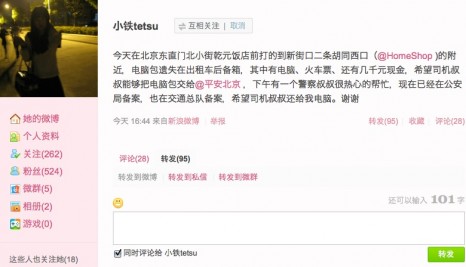
失物 018:电脑 (联想 thinkpad)、火车票、现金 (八千多)、一本行为艺术的书、若干英文资料
丢失时间:2012年3月14日上午
地点:在东直门桥东,银座对面的交通枢纽打的士到交道口北二条胡同(汾酒那个店的斜前方),的士后备箱
Lost & Found Object No. 018: Lenovo Thinkpad laptop, one train ticket, 8,000+ RMB, book on performance art, a number of English text papers
Last seen: morning of 14 March 2012
Location: in the trunk of a taxi headed from the east side of Dongzhimen bridge, at the public transport station across from the Ginza Mall, headed towards Jiaodaokou Beiertiao (diagonally across from the Fenjiu liquor shop)
—–
 时间 posted on: 14 March 2012 |
时间 posted on: 14 March 2012 |  发布者 author: e |
发布者 author: e |  评论 comment (0) |
评论 comment (0) |
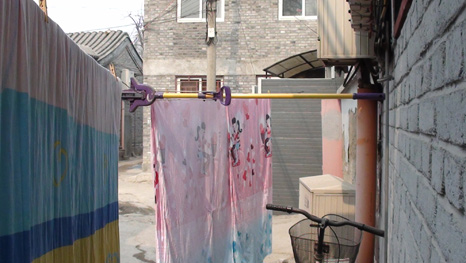
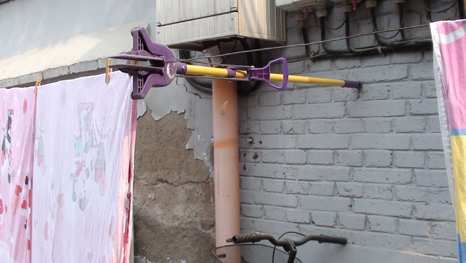
设计手法 001:神奇拖把的用途
纪录时间与地点:2012年2月29日早上,青炭局胡同
Design Technique No. 001: suspension mop handle for clothing line tension
Logged: morning of 29 February 2012, Green Charcoal Bureau Hutong
 时间 posted on: 13 March 2012 |
时间 posted on: 13 March 2012 |  发布者 author: cc |
发布者 author: cc |  评论 comment (0) |
评论 comment (0) |
春天近了,沙尘暴也随之而来。正值“尘土飞扬”的好时机,DUSTbar开始了它的新计划:Letters漫游。
“Letter”在英文中既有字母的意思,也指代信件。在DUSTbar的“字母表”中,每个字母代表一个人,他们曾经与DUSTbar相遇,并建立了友谊。比如,A代表“阿布”,B代表“本杰明”。在Google Maps的帮助下,上面的图片展示了DUSTbar的“关系地图”。更多细节:字母表。
同时,信件往往蕴藏着寄信人与收信人之间的亲密关系。借着狂风,DUSTbar给“字母表”中的每个“字母”寄出了一封信。打开它,看看记忆和情绪在胶片与文字中留下了怎样的印迹。
“尘土”何时飞扬到你家?
Spring is approaching along with the sand storms. Now it’s exact the right time for flying dust, and DUSTbar starts its new plan: letters wandering.
“Letter” means either an alphabetic character or a mail. Here in the DUSTbar’s “Alphabet”, each letter stands for one person who has ever encountered DUSTbar and built up friendship with it. For example, A stands for “A Bu”, B stands for “Benjamin”. With the help of Google maps, the picture above shows the relation-map of DUSTbar. More details: Alphabet
Meanwhile, letters (mails) also hide the intimate relationship between two. As the sand storm blows, DUSTbar sends the letters to each letter on the “Alphabet”. Open it to see how the memories/emotions are left in photos/words.
When will the dust fly to your home?
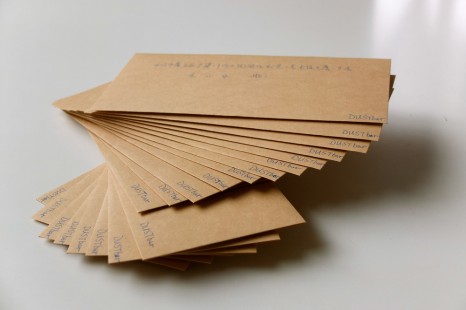
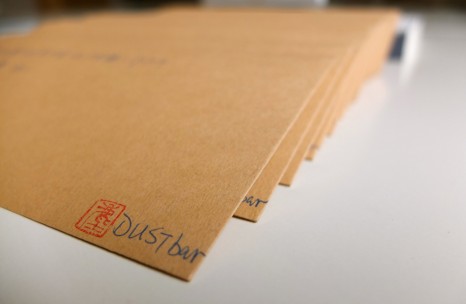
 时间 posted on: 10 March 2012 |
时间 posted on: 10 March 2012 |  发布者 author: cc |
发布者 author: cc |  comments (3) |
comments (3) |
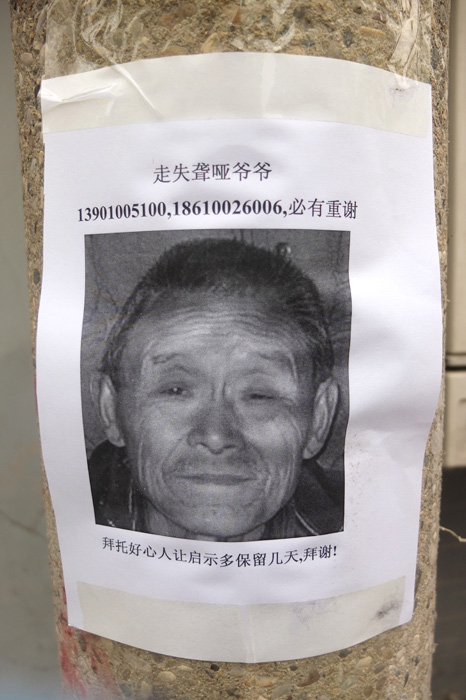
失物人 015:聋哑爷爷
发生失踪时间:2012年02月22日, 下午2点12分
地点:摄于箭厂胡同,北新桥/交道口附近有大量相同告示
Lost & Found No. 015: deaf grandpa
Last seen: 22 February 2012, 14.12
Location: Above pictured sign seen at Jianchang Hutong, many others seen all around the Jiaodaokou/Beixinqiao area
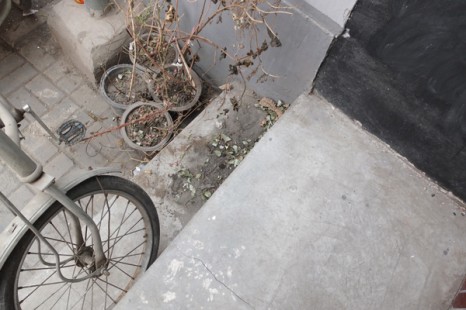
失物品 016:3个用铁丝连起来的花盆(死花)
发生失踪时间:2012年02月27日, 下午2点14分
地点:交道口北二条8号,家作坊台阶,黑板旁边
Lost & Found Object No. 016: 3 ceramic flower pots (dead flowers), bound together by iron wire
Last seen: 27 February 2012, 14.14
Location: HomeShop front steps, next to the blackboard
—–
 时间 posted on: 28 February 2012 |
时间 posted on: 28 February 2012 |  发布者 author: e |
发布者 author: e |  comment (1) |
comment (1) |
制作已花费了很长时间,我们一直在努力将已有的资源整合并分享,现在是收获的季节 啦:
www.homeshop.org.cn 或者 www.homeshopbeijing.org 。
由于网站包含众多内容,访问时请耐心等待…
点击链接访问家作坊的新网站之后,您可在四周活动一圈,做下伸展运动或者泡杯茶,网站正在加载中——慢工出细活——需要时间…
最后,站在兔年的尾巴上,家作坊祝大家龙年“张牙舞爪”!
It’s been a long time in the making, but here we are, an attempt to gather together and share some of what we do:
www.homeshop.org.cn or www.homeshopbeijing.org.
There’s a lot of space in-between; please visit and stick around…
Go ahead and click on the link to visit HomeShop’s brand new website, then take a small walk around the room, do some stretching exercises or make tea; this website is a work-in-progress, and—like all good things—takes time…
But don’t let that stop us from multi-tasking——Michael, 何颖雅 Elaine, Fotini, 欧阳潇 Xiao, 曲一箴 Twist, 植村 絵美 Emi and 王尘尘 Cici at HomeShop wish you all fierce flights and a happy Dragon year.
 时间 posted on: 22 January 2012 |
时间 posted on: 22 January 2012 |  发布者 author: 家作坊 HomeShop |
发布者 author: 家作坊 HomeShop |  评论 comment (0) |
评论 comment (0) |
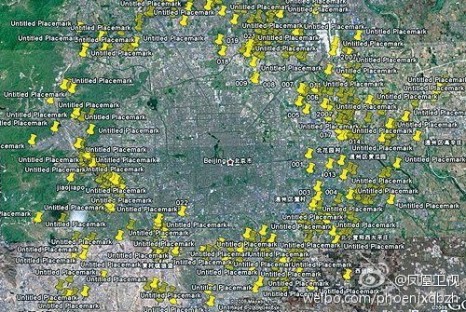
location: “中国箱包之都 China Luggage & Bag Capital”
河北省保定市白沟工业城
Baigou Industrial City, Baoding, Hebei Province
date: 5-6 January 2012
It is said that Beijingers’ vicinity to the imperial seat (both past and, ahem…present) means that they don’t know much about how to really do anything, as serving the government—or at least falling heavily shadowed in its midst—means that you do not really have to make your own living, nor can you cheat too far astray from the one that’s been allotted to you (think, in contrast, of those wild rebel producers in Guangdong [2]). The Beijinger’s belly is big, it’s got swagger like that and stands for a certain slow pace of life unlike the typical notion of an urban persona. So where we had previously held some romantic vision of an action-packed urban exploration, venturing out again this winter we realise that such adventure has less to do with sleek and agile black-clad intrigue than a questioning of what the making of urbanity really means here in Beijing, the capital city of not-knowing-how-to-do-much.
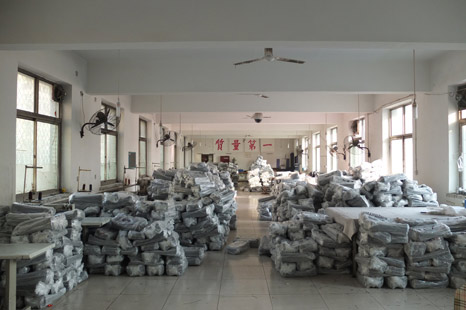
A visit to a friend of QU’s luggage and bag factory was compelled by curiosity and surprise, for such industrial production in Beijing is rare, but what we thought would be the outskirts of Beijing turned out to be Hebei province, surrounding Beijing on all sides like a seventh or eighth ring, traceable by desolate farmlands, landfills and, yes… production. 白沟镇 Baigou village, approximately three and a half hours from HomeShop by bus or subway and long-distance coach, once fell under the jurisdiction of 高碑店市 Gaobeidian city (not to be confused with the 高碑店 Gaobeidian of fake antique furniture fame in eastern Beijing), but for some unknown reason has in latter years been re-territorialised as part of the 保定市 Baoding municipality, a city historically well-known for being a site of minor victory over the Japanese during the occupation in the 30s. Baigou was in fact once called 白狗, but this unflattering name (meaning “white dog”) was later changed to 白沟, and from the trenches of this small village farmers were engaged as early as the 70s in 副业 sideline work in bag manufacturing as part of the communists’ organising of 生产队 production units across the country.
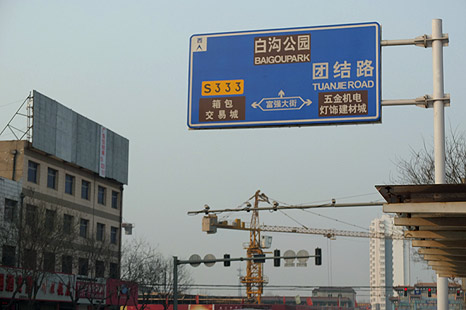
LIU Lei’s mother can still remember the time when her family grew vegetables on their land, but she says that by the time of the reform and opening up at the end of the decade many farms already sat fallow as the shift from farmer to manufacturer grew, like the design of fashionable bags, more and more intense. There is perhaps a mutual feeling of 没办法 for those farmers who leave their land to make better fortunes as businessmen and migrant workers (“如果没土地了,怎么办?开三轮,开小商店,你什么能力都没有只能打工咯,没办法 Without land, what are you supposed to do? Drive a motor-taxi, open a small shop, or if you don’t have any skills whatsoever you can only be a laborer, what other way is there?”), and those who are forcibly evicted by developers with petty compensation (“一千一亩就等于抢走的 1,000 yuan per mu is basically like being robbed”), but at the end of a long description of a violent protest incident in Baoding last summer, where around 1,000 farmers occupied a highway in protest of unfair compensation for their land (“你能怎么地?上访?你走不出保定,走不出河北,更到不了北京。 What are you gonna do? Make appeals to authorities? You won’t be able to get past Baoding [municipality], you won’t get to Hebei [provincial authoritiy], and don’t even think about Beijing.”), LIU Lei’s father cannot help but smile embarrassedly that their family’s luggage and bag factory has benefited from the state-directed urbanisation of Baigou. Family-run production units-cum-full-fledged businesses grew steadily in the 80s, and LIU Lei’s family joined mid-decade with her mother and father making bags themselves and other relatives in the family traveling as far as Sichuan to sell their ready-made stock. The conglomerated efforts of the families of Baigou (majority Han Chinese with a large population of 回族 Hui minority peoples) began to attract tradesmen to the village itself, and the LIU family no longer had to travel; their bags sold quickly from the aluminum rack stands they set up in the village market.
With support from continued urban development initiatives like the 白沟新城经济社会发展居 Baigou New City Socio-Economic Development Bureau and the 保定白沟箱包产业生产力促进中心 Baoding Baigou Luggage and Bag Industry Productive Force Promotion Center, Baigou has risen to become Hebei province’s only nationally supported and monitored economic zone, with factories like that of the LIU’s producing around 1,000+ bags daily. Supported by the labour of between 70 and 100 employees from neighboring provinces like Henan and Gansu, the 2-story factory the LIU family built on land they purchased from a developer for approximately 100,000 yuan/mu (1/6 of an acre) has now been renovated with an additional floor of worker dormitories, and the price of the land has jumped to 4 or 500,000 yuan/mu. Whilst the real estate bubble is finally finding its friction in the mega-cities of Beijing or Shanghai, it is clear to LIU Lei’s family that there is still a lot more room to grow in Baigou. Keen city-developer relationships keep the dust flying under the many cranes that hang over the landscape, and the influx of new residents and labourers from other areas pumps the village population from 100,000 to 4 or 500,000. 22 year-old LIU Lei’s web savvy and English abilities give the Honghaitang company a whole new sphere of possibility, and supported by the government’s sponsorship of half of their Alibaba membership fees, a single family in Baigou is able to place itself on an international map of production and consumption.
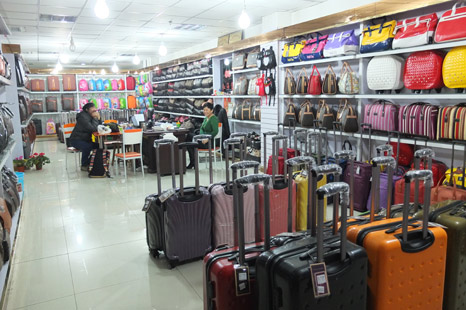
Where geographers define urban construction as “the key mechanism of local state building” [3], LIU Lei’s father says simply, “发展的意思就是盖一个楼 Development here just means building a building“, and their factory is the most concrete evidence of it. But what we must consider here are the complex forces that push a “state-led urbanisation” into a very real dynamic with the local level, whether that be through the fist of 城管 chéngguăn bullying farmers from their land or local families joining together to purchase land instead of buying from 外地 wàidì developers. As such, territorial strategies occur both top-down and from the ground-up, “as much a tool of resistance as of dominance.” [4]
No conclusions yet… to be continued.
城市探索与发现(第三期),是一通过短途漂移和旅行摸索城市化进程的持续性项目。有意参与未来小旅行者(提供路线或参与旅行均可),请联系lianxi[at]homeshop[dot]org[dot]cn.
This is urban exploration number three, part of what will be a continuing series of minor drifts and journeys into the making of the city. If you are interested to join future outings or have suggestions for one, please send a note of interest to lianxi[at]homeshop[dot]org[dot]cn.
 时间 posted on: 9 January 2012 |
时间 posted on: 9 January 2012 |  发布者 author: e |
发布者 author: e |  comment (1) |
comment (1) |